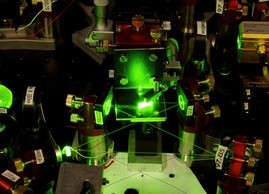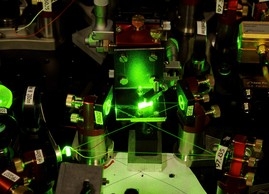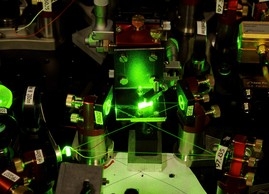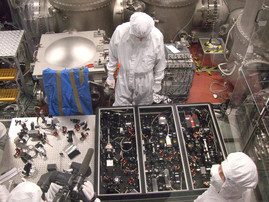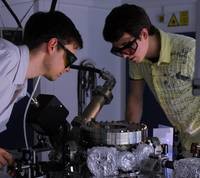Posted on Youtube.com
List of Research Groups
- Experimental Quantum Metrology
- Third Generation Gravitational Wave Observatories
- Atomic Quantum Sensors
- Quantum Control
- Fundamental Noise Sources
- Quantum Sensors with Cold Ions
- 10 m Prototype Interferometer
Overview
The "Quantum Sensors" field of research merges two highly active directions of research, quantum engineering and space-time research. In the group "Experimental Quantum Metrology", the research activities revolve around fundamental questions such as: Are the constants of nature actually constant? How accurate are the predictions of physical theories?
The researchers in the group "Third Generation Gravitational Wave Detector" are currently performing a conceptual design study funded as part of the European Union’s 7th Framework Programme. QUEST is participating by researching various innovative optical readout schemes and detector topologies, and investigating high power lasers, the properties of alternative optical materials, the usability of alternatives to dielectric optical coatings, the potential and optimization in the utilization of squeezed light, and the requirements in computational resources for data analysis.
Atomic Quantum Sensors are a fascinating symbiosis of light and matter waves. Research extends from the fundamental aspects of matter wave optics to applications of matter waves in interferometers. In the frame-work of the QUEST project "Fundamental Noise Sources", the first squeezed-light laser suitable for operation in gravitational wave detectors has been designed and assembled and is being installed in the GEO 600 observatory. The research group "Quantum Sensors with Cold Ions" investigates the potential of ultra-stable optical clocks for applications in navigation and the measurement of gravitational potentials. Innovative ion-trap chips with integrated electronic circuits are being developed to scale up the number of ions in micro-structured and segmented traps. The 10 m Prototype Interferometer is a test bed to develop techniques for upgrading the gravitational-wave detector GEO 600. These include, for example, new high-power lasers, advanced seismic isolation, and the reduction of quantum noise.
These experiments aim at obtaining a better understanding of how quantum mechanical effects can govern the macroscopic world.
